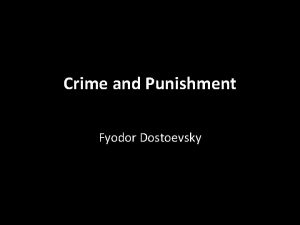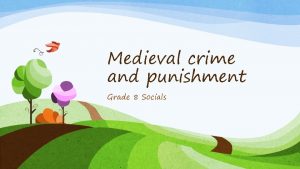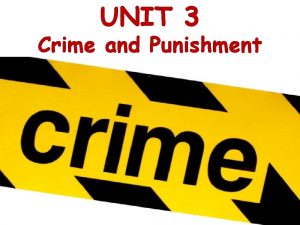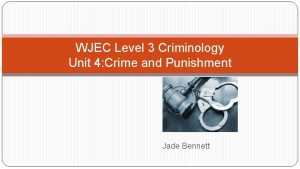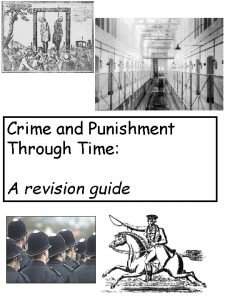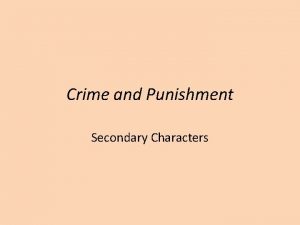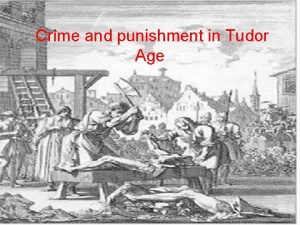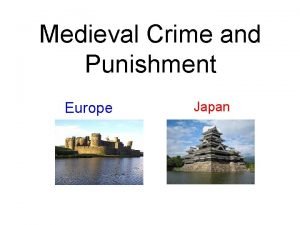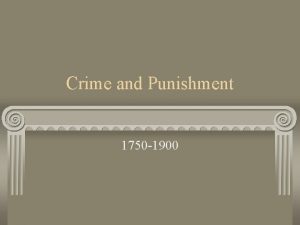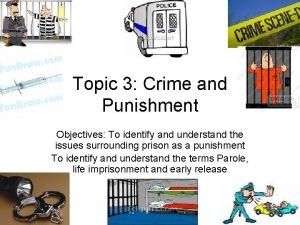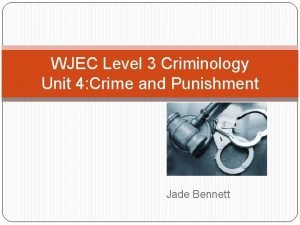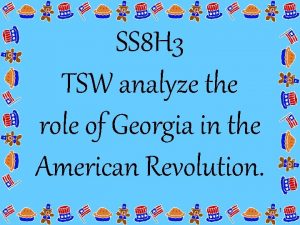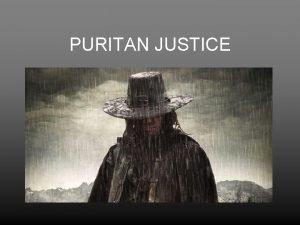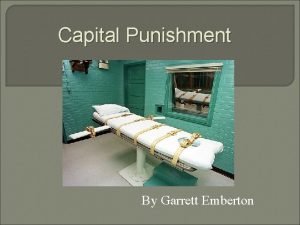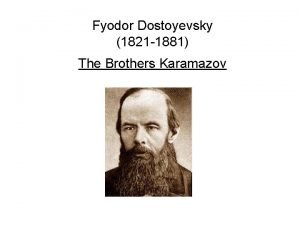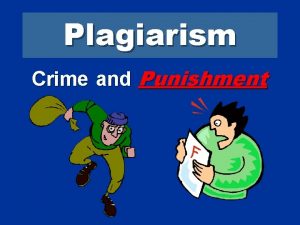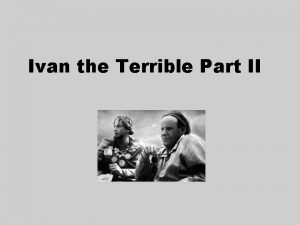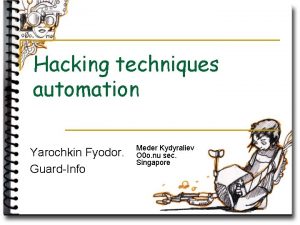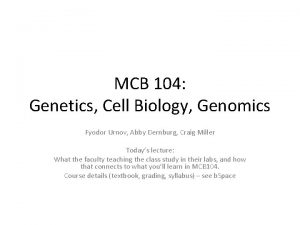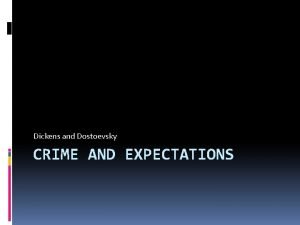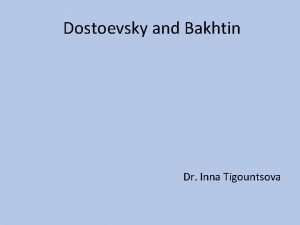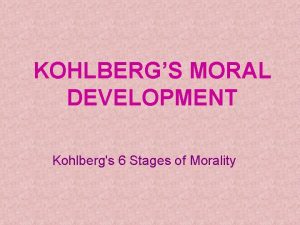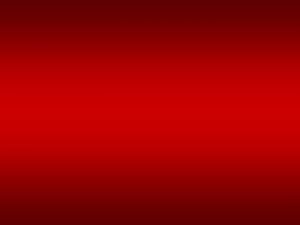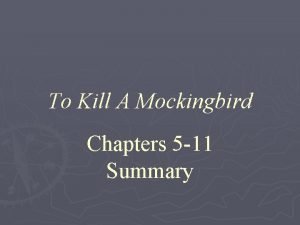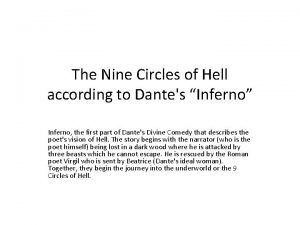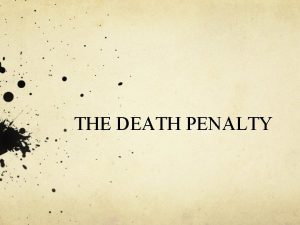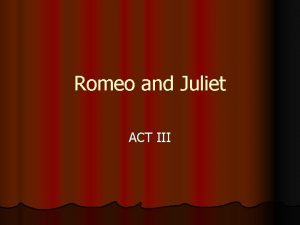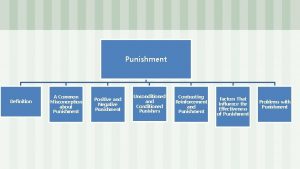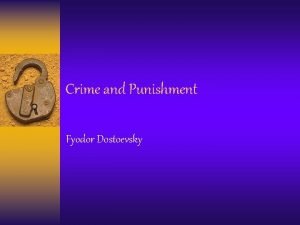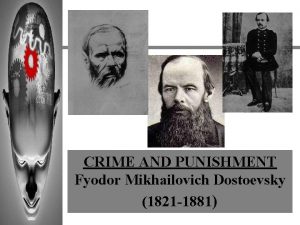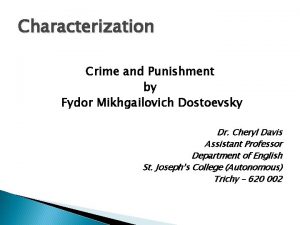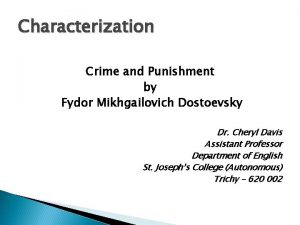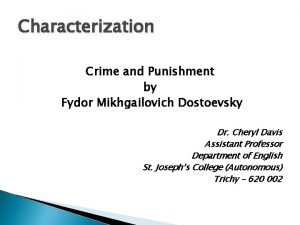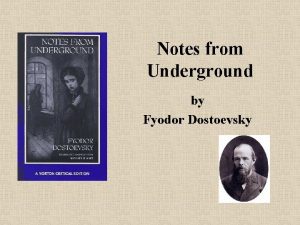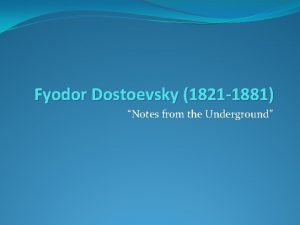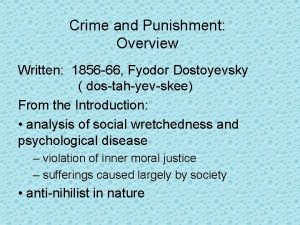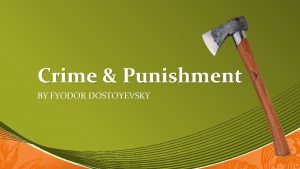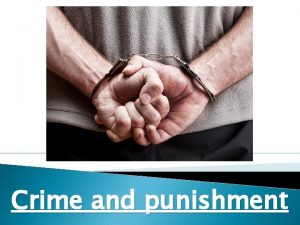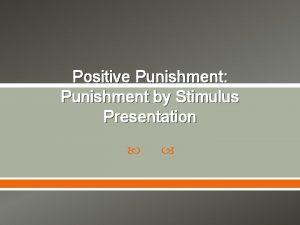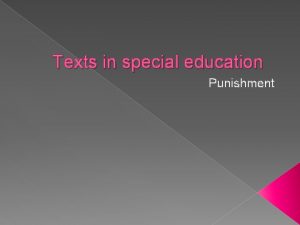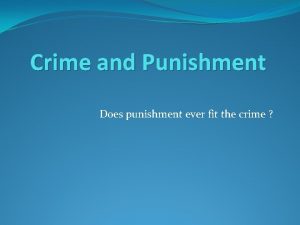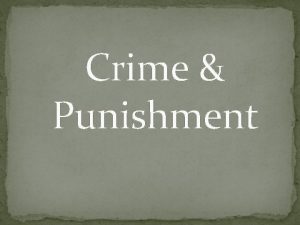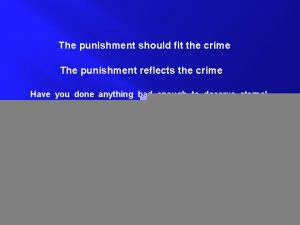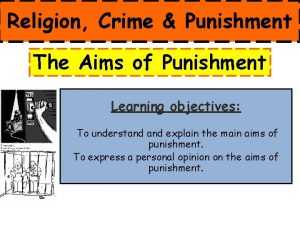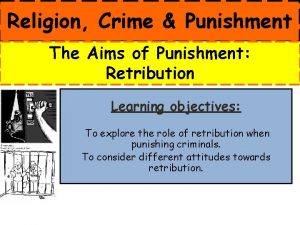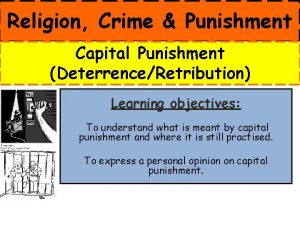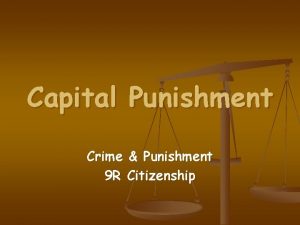Crime and Punishment Fyodor Dostoevsky Key Facts full








































- Slides: 40

Crime and Punishment Fyodor Dostoevsky

Key Facts • full title · Crime and Punishment • author · Fyodor Dostoevsky • type of work · Novel • genre · Psychological drama • language · Russian • point of view · The story is told primarily from the point of view of Raskolnikov but occasionally switches to the perspective of Svidrigailov, Razumikhin, and Dunya. • tense · Past • narrator · Third-person omniscient • climax · Raskolnikov's confession in Part VI, Chapter VIII • protagonist · Raskolnikov • antagonists · Luzhin, Porfiry Petrovich, Svidrigailov, Raskolnikov's conscience • settings (time) · 1860 s • settings (place) · St. Petersburg and a prison in Siberia

Plot Summary • Raskolnikov, a drop-out student, chooses to live in a tiny, rented room in Saint Petersburg. He refuses all help, even from his friend Razumikhin, and plans to murder an unpleasant elderly money-lender, Alëna, and profit from her wealth— his motivation, whether personal or ideological, remains unclear. When Raskolnikov kills Alëna, however, he is also forced to kill her half-sister, Lizaveta, who happens to enter the scene of the crime. • After the murder, Raskolnikov falls into a feverish state. He behaves as though he wishes to betray himself, and the detective Porfiry begins to suspect him purely on psychological grounds. At the same time, a chaste relationship develops between Raskolnikov and Sonya—a prostitute full of Christian virtue, driven into the profession by the habits of her father—and Raskolnikov confesses his crime to her. • The confession is overheard by Svidrigaylov, a shadowy figure whose aim is to seduce Raskolnikov's sister, Dunya. Svidrigaylov appears to have a hold over Raskolnikov, but when he unexpectedly commits suicide, Raskolnikov goes to the police himself to confess. He is sentenced to penal servitude in Siberia; Sonya follows him, and the Epilogue holds out hope for Raskolnikov's redemption and moral regeneration under her influence.

Raskolnikov • Raskolnikov is the protagonist of the novel, and the story is told almost exclusively from his point of view. His name derives from the Russian word raskolnik, meaning “schismatic” or “divided, ” which is appropriate since his most fundamental character trait is his alienation from human society. • His pride and intellectualism lead him to disdain the rest of humanity as fit merely to perpetuate the species. In contrast, he believes that he is part of an elite “superman” echelon and can consequently transgress accepted moral standards for higher purposes such as utilitarian good. • However, that guilt that torments him after he murders Alyona Ivanovna and Lizaveta and his recurring faintness at the mention of the murders serve as proof to him that he is not made of the same stuff as a true “superman” such as Napoleon.

Sonya • Sonya is quiet, timid, and easily embarrassed, but she is also extremely devout and devoted to her family. Her sacrifice of prostituting herself for the sake of her family is made even more poignant by the fact that it would not be necessary were her father able to control his drinking habit. Initially scared of the half-delirious Raskolnikov, Sonya, in her infinite capacity for understanding, begins to care deeply about him. • She is not horrified by his crimes, but rather, concerned for his soul and mental well-being, urges him to confess. Raskolnikov thinks of her, at first, as a fellow transgressor, someone who has stepped over the line between morality and immorality, just as he has. But there is a crucial difference between their transgressions that Raskolnikov is unwilling to acknowledge: she sins for the sake of others, whereas he sins for no one but himself. • Sonya illustrates important social and political issues that were of concern to Dostoevsky, such as the treatment of women, the effects of poverty, the importance of religious faith, and the importance of devotion to family.

Dunya • Dunya is Raskolnikov's sister and shares many of his traits. She is intelligent, proud, beautiful, and strong-willed. But in most other ways, she is Raskolnikov's exact opposite. Whereas he is self-centered, cruel, and prone to intellectualizing, she is self-sacrificing, kind, and exhibits endless compassion. • The relationship between Dunya and Raskolnikov is always based on mutual love and respect, but it swings from one extreme of emotion to the other as Raskolnikov slowly approaches the moment of confession. In many ways, Dunya is more mature than her brother: while he grows angry and dizzy confronting Luzhin, she remains confident and in control, even when she becomes just as angry. • She is the strongest female character in the novel, neither as crushed by poverty nor as timid as Sonya. If there any heroes in Crime and Punishment, she, along with Razumikhin, is certainly one of them, which makes their marriage at the end of the novel particularly appropriate.

Svidrigailov • Svidrigailov is one of the most enigmatic characters in Crime and Punishment. Dostoevsky leaves little doubt as to Svidrigailov's status as a villain. But all of Svidrigailov's crimes, except for his attempted rape of Dunya, are behind him. We witness Svidrigailov perform goods deeds, such as giving money to the family of his fiancée, to Katerina Ivanovna and her children, and to Dunya. • Although he is a violent and sneaky individual, Svidrigailov possesses the ability to accept that he cannot force reality to conform to his deepest desires. In this regard, he functions as a foil to Raskolnikov, who can accept only partially the breakdown of his presumed “superman” identity. Further, whereas Raskolnikov believes unflinchingly in the utilitarian rationale for Alyona Ivanovna's murder, Svidrigailov doesn't try to contest the death of his romantic vision when Dunya rejects him. • Although the painful realization that he will never have the love of someone as honest, kind, intelligent, and beautiful as she is compels him to commit suicide, he is one of the few characters in the novel to die with dignity.

Themes • Alienation is the primary theme of Crime and • Punishment. At first, Raskolnikov's pride separates him from society. He sees himself as superior to all other people and so cannot relate to anyone. Within his personal philosophy, he sees other people as tools and uses them for his own ends. After committing the murders, his isolation grows because of his intense guilt and the half-delirium into which his guilt throws him. Over and over again, Raskolnikov pushes away the people who are trying to help him, including Sonya, Dunya, Pulcheria Alexandrovna, Razumikhin, and even Porfiry Petrovich, and then suffers the consequences. The manner in which the novel addresses crime and punishment is not exactly what one would expect. The crime is committed in Part I and the punishment comes hundreds of pages later, in the Epilogue. The real focus of the novel is not on those two endpoints but on what lies between them—an in-depth exploration of the psychology of a criminal. The inner world of Raskolnikov, with all of its doubts, deliria, second-guessing, fear, and despair, is the heart of the story. Dostoevsky concerns himself not with the actual repercussions of the murder but with the way the murder forces Raskolnikov to deal with tormenting guilt. Indeed, by focusing so little on Raskolnikov's imprisonment, Dostoevsky seems to suggest that actual punishment is much less terrible than the stress and anxiety of trying to avoid punishment.

Themes • • At the beginning of the novel, Raskolnikov sees himself as a “superman, ” a person who is extraordinary and thus above the moral rules that govern the rest of humanity. His murder of the pawnbroker is, in part, a consequence of his belief that he is above the law and an attempt to establish the truth of his superiority. Raskolnikov's inability to quell his subsequent feelings of guilt, however, proves to him that he is not a “superman. ” Although he realizes his failure to live up to what he has envisioned for himself, he is nevertheless unwilling to accept the total deconstruction of this identity. He continues to resist the idea that he is as mediocre as the rest of humanity by maintaining to himself that the murder was justified. Nihilism was a philosophical position developed in Russia in the 1850 s and 1860 s, known for “negating more, ” in the words of Lebezyatnikov. It rejected family and societal bonds and emotional and aesthetic concerns in favor of a strict materialism, or the idea that there is no “mind” or “soul” outside of the physical world. Linked to nihilism is utilitarianism, or the idea that moral decisions should be based on the rule of the greatest happiness for the largest number of people. Raskolnikov originally justifies the murder of Alyona on utilitarian grounds, claiming that a “louse” has been removed from society. Whether or not the murder is actually a utilitarian act, Raskolnikov is certainly a nihilist; completely unsentimental for most of the novel, he cares nothing about the emotions of others.

Motif • Poverty is ubiquitous in the St. Petersburg of Dostoevsky's novel. Almost every character in the novel—except Luzhin, Svidrigailov, and the police officials—is desperately poor, including the Marmeladovs, the Raskolnikovs, Razumikhin, and various lesser characters. While poverty inherently forces families to bond together, Raskolnikov often attempts to distance himself from Pulcheria Alexandrovna and Dunya. He scolds his sister when he thinks that she is marrying to help him out financially; he also rejects Razumikhin's offer of a job. Dostoevsky's descriptions of poverty allow him to address important social issues and to create rich, problematic situations in which the only way to survive is through self-sacrifice. As a result, poverty enables characters such as Sonya and Dunya to demonstrate their strength and compassion.

Symbols • The city of St. Petersburg as represented in Dostoevsky's novel is dirty and crowded. Drunks are sprawled on the street in broad daylight, consumptive women beat their children and beg for money, and everyone is crowded into tiny, noisy apartments. The clutter and chaos of St. Petersburg is a twofold symbol. It represents the state of society, with all of its inequalities, prejudices, and deficits. But it also represents Raskolnikov's delirious, agitated state as he spirals through the novel toward the point of his confession and redemption. He can escape neither the city nor his warped mind. From the very beginning, the narrator describes the heat and “the odor” coming off the city, the crowds, and the disorder, and says they “all contributed to irritate the young man's already excited nerves. ” Indeed, it is only when Raskolnikov is forcefully removed from the city to a prison in a small town in Siberia that he is able to regain compassion and balance.

Symbols • The cross that Sonya gives to Raskolnikov before he goes to the police station to confess is an important symbol of redemption for him. Throughout Christendom, of course, the cross symbolizes Jesus' self-sacrifice for the sins of humanity. Raskolnikov denies any feeling of sin or devoutness even after he receives the cross; the cross symbolizes not that he has achieved redemption or even understood what Sonya believes religion can offer him, but that he has begun on the path toward recognition of the sins that he has committed. That Sonya is the one who gives him the cross has special significance: she gives of herself to bring him back to humanity, and her love and concern for him, like that of Jesus, according to Christianity, will ultimately save and renew him.

Native Son Richard Wright

Key Facts • • • author · Richard Wright type of work · Novel genre · Urban naturalism; novel of social protest language · English time and place written · 1938– 1939, Brooklyn, New York tense · Past setting (time) · 1930 s setting (place) · Chicago protagonist · Bigger Thomas major conflict · The fear, hatred, and anger that racism has impressed upon Bigger Thomas ravages his individuality so severely that his only means of self-expression is violence. After killing Mary Dalton, Bigger must contend with the law, the hatred of society, and his own destructive inner feelings. • • narrator · The story is narrated in a limited third-person voice that focuses on Bigger Thomas's thoughts and feelings. point of view · The story is told almost exclusively from Bigger's perspective. tone · The narrator's attitude toward his subject is one of absorption. The narrator is preoccupied with bringing us into Bigger's mind and situation, using short, evocative sentences to tell the story. Though the narrator is clearly opposed to the destructive racism that the novel chronicles, there is very little narrative editorializing, though some characters, such as Max, make statements that evoke a secondary tone of social protest in the final part of the novel. climax · Each of the three books of the novel has its own climax: Book One climaxes with the murder of Mary, Book Two with the discovery of Mary's remains in the furnace, and Book Three with the culmination of Bigger's trial in the death sentence.

Book One: Fear Bigger Thomas wakes up in a dark, small room at the sound of the alarm clock. He lives in one room with his brother, Buddy, his sister, Vera, and their mother. Suddenly, a rat appears. The room turns into a maelstrom and, after a violent chase, Bigger kills the animal with an iron skillet and terrorizes Vera with the dark body. Vera faints and the mother scolds Bigger, who hates his family because they suffer and he cannot do anything about it. That evening, Bigger has to see Mr. Dalton for a new job. Bigger's family depends on him. He would like to leave his responsibilities forever but when he thinks of what to do, he only sees a blank wall. He walks to the poolroom and meets his friend Gus. Bigger tells him that every time he thinks about whites, he feels something terrible will happen to him. They meet other friends, G. H. and Jack, and plan a robbery. They are afraid of attacking a white man but none of them wants to say so. Before the robbery, Bigger and Jack go to the movies. They are attracted to the world of wealthy whites in the newsreel and feel strangely moved by the tom-toms and the primitive black people in the film. But they feel they do not belong to either of those worlds. After the cinema, Bigger attacks Gus violently. The fight ends any chance of the robbery occurring. Bigger is obscurely conscious that he has done this on purpose.

Book One: Fear When he finally gets the job, he does not know how to behave in the big house. Mr. Dalton and his blind wife use strange words. They try to be kind to Bigger but they make him very uncomfortable because Bigger does not know what they expect of him. Then their daughter, Mary, enters the room, asks Bigger why he does not belong to a union and calls her father a "capitalist. " Bigger does not know that word and is even more confused and afraid to lose the job. After the conversation, Peggy, the Irish cook, takes Bigger to his room and tells him that the Daltons are a nice family but that he must avoid Mary's communist friends. Bigger has never had a room for himself before. That night, he drives Mary around and meets her boyfriend, Jan and Mary infuriate Bigger because they talk to him, oblige him to take them to the diner where his friends are, invite him to sit at their table, and tell him to call them by their first names. At the diner they buy a bottle of rum. Bigger drives throughout the park, and Jan and Mary drink the rum, and fool around in the back seat. Then Jan and Mary part, but Mary is so drunk that Bigger has to carry her to her bedroom when they arrive home. He is terrified someone will see him with her in his arms, but he cannot resist the temptation of the forbidden and he kisses her. Just then, the bedroom door opens. It is Mrs. Dalton. Bigger knows she is blind but is terrified she will sense him there. He tries to make Mary still by putting the pillow over head. Mrs. Dalton approaches the bed, smells whiskey in the air, scolds her daughter, and leaves. Mary claws at Bigger's hands while Mrs. Dalton is in the room, trying to alert Bigger that she cannot breathe. Just then, Bigger notices that Mary is not breathing anymore. She has suffocated. Bigger starts thinking frantically. He decides he will tell everyone that Jan, the communist, took Mary into the house. Then he thinks it will be better if Mary disappears and everyone thinks she has gone for a visit. In desperation, he decides to burn her body in the house's furnace. He has to cut her head off in order to fit her into the furnace, but finally manages to put the body inside. He adds extra coal to the furnace, leaves it there to burn, and goes home.

Book Two: Flight When Bigger talks with his family and meets his friends, he feels different now. The crime gives meaning to his life. When he goes back to the big house, Mrs. Dalton notices her daughter's disappearance and asks Bigger about the night before. Bigger tries to point suspicion toward Jan. Mrs. Dalton sends Bigger home for the day, and Bigger decides to visit his girlfriend, Bessie mentions a famous case in which the kidnappers of a child first killed him and then asked for ransom money. Bigger decides to do the same. He tells Bessie that he knows Mary has disappeared and will use that knowledge to get money from the Daltons, but in the conversation he realizes Bessie suspects him of having done something to Mary. Bigger goes back to work. Mr. Dalton has called a private detective, Mr. Britten, and this time, sensing Britten's racism, Bigger accuses Jan on the grounds of his race (he is Jewish), his political beliefs (communist), and his friendly attitude towards black people. When Britten finds Jan, he puts the boy and Bigger in the same room and confronts them with their conflicting stories. Jan is surprised by Bigger's story but offers him help. Bigger storms away from the Dalton's. He decides to write the false kidnap note when he discovers that the owner of the rat-infested flat his family rents is Mr. Dalton. Bigger slips the note under the Dalton's front door and then returns to his room. When the Daltons receive the note, they contact the police, who take over the investigation from Britten, and journalists soon arrive at the house. Bigger is afraid, but he does not want to leave. In the afternoon, he is ordered to take the ashes out of the stove and make a new fire. He is so terrified that he starts poking the ashes with the shovel until the whole room is full of smoke. Furious, one of the journalists takes the shovel and pushes Bigger aside. He immediately finds the remains of Mary's bones and an earring in the stove. Bigger flees. Bigger goes directly to Bessie and tells her the whole story. Bessie realizes that white people will think he raped the girl before killing her. They leave together, but Bigger has to drag Bessie around because she is paralyzed by fear. When they lie down together in an abandoned building, Bigger rapes Bessie, and he decides that he will have to kill her. He hits Bessie's head with a brick several times, and then throws her through a window, into an air shaft, but he forgets that the only money he had was in her pocket, a symbol of her value to him. Bigger runs through the city. He sees newspaper headlines concerning the crime and overhears different conversations about it. Whites call him "ape. " Blacks hate him because he has given the whites an excuse for racism. But now he is someone; he feels he has an identity. He will not say the crime was an accident. After a wild chase over the rooftops of the city, the police catch him.

Book Three: Fate During his first few days in prison, Bigger does not eat, drink, or talk to anyone. Then Jan comes to see him. He says Bigger has taught him a lot about black-white relationships and offers him the help of a communist lawyer, Max. In the long hours Max and Bigger pass together, Max learns about the sufferings and feelings of black people and Bigger learns about himself. He starts understanding his relationships with his family and with the world. He acknowledges his fury, his need for a future, and his wish for a meaningful life. He reconsiders his attitudes about white people, whether they are prejudiced, like Britten, or accepting, like Jan. At Bigger's trial, Max tells the judge that Bigger killed because he was cornered by society from the moment he was born. He tells them that a way to cut the evil sequence of abuse and murder is to sentence Bigger to life in prison and not to death. But the judge apparently does not sympathize and sentences Bigger to the electric chair. In the last scene, while he waits for death, Bigger tells Max, "I didn't know I was really alive in this world until I felt things hard enough to kill for 'em. " Bigger then tells him to say "hello" to Jan. For the first time, he calls him "Jan", not "Mister", just as Jan had wanted. This signifies that he finally sees whites as individuals, rather than a looming force. During their final moments of discussion, while Bigger is on death row, Max tries to summarize how white society has conditioned great anger and effeteness into Bigger and other oppressed impoverished people, but Bigger somewhat misinterprets this and twists it into a different message in order to comfort himself. He claims that "What I killed for must've been good!" and thus exemplifies what Max has just tried to explain to him-- that white corporate society is keeping the poor people angry, and ignorant as to why they are angry. Bigger, however, does not comprehend this for exactly those same reasons, and Max becomes quite shaken and teary-eyed before the two shake hands and Max leaves, and Bigger is alone.

Bigger Thomas As the protagonist and main character of Native Son, Bigger is the focus of the novel and the embodiment of its main theme—the effect of racism on the psychological state of its black victims. As a twenty-year-old black man cramped in a South Side apartment with his family, Bigger has lived a life defined by the fear and anger he feels toward whites for as long as he can remember. Bigger is limited by the fact that he has only completed the eighth grade, and by the racist real estate practices that force him to live in poverty. Furthermore, he is subjected to endless bombardment from a popular culture that portrays whites as sophisticated and blacks as either subservient or savage. Indeed, racism has severely curtailed Bigger's prospects in life and even his very conception of himself. He is ashamed of his family's poverty and afraid of the whites who control his life— feelings he works hard to keep hidden, even from himself. When these feelings overwhelm him, he reacts with violence. Bigger commits crimes with his friends—though only against other blacks, as the group is too frightened to rob a white man—but his own violence is often directed at these friends as well. Bigger feels little guilt after he accidentally kills Mary. In fact, he feels for the first time as though his life actually has meaning. Mary's murder makes him believe that he has the power to assert himself against whites. Wright goes out of his way to emphasize that Bigger is not a conventional hero, as his brutality and capacity for violence are extremely disturbing, especially in graphic scenes such as the one in which he decapitates Mary's corpse in order to stuff it into the furnace. Wright does not present Bigger as a hero to admire, but as a frightening and upsetting figure created by racism. Indeed, Wright's point is that Bigger becomes a brutal killer precisely because the dominant white culture fears that he will become a brutal killer. By confirming whites' fears, Bigger contributes to the cycle of racism in America. Only after he meets Max and learns to talk through his problems does Bigger begin to redeem himself, recognizing whites as individuals for the first time and realizing the extent to which he has been stunted by racism. Bigger's progress is cut short, however, by his execution. Critics of Native Son are divided over the effectiveness of Bigger as a character. Though many have found him a powerful and disturbing symbol of black rage, others, including the eminent writer James Baldwin, have considered him too narrow to represent the full scope of black experience in America. One area of fascination has been Bigger's name, which seems to combine the words “big” and “nigger, ” suggesting the aggressive racial stereotype he comes to embody. As Max indicates, however, Bigger does not have a great deal of choice. The title of the novel implies that Bigger's descent into criminality and violence is an inherently American story. Bigger is not alien to or outside of American culture—on the contrary, he is a “native son. ”

Mary Dalton • • • Mary's importance to the novel stems not only from her death, which represents the clear turning point in Bigger's life, but from her insidious form of racism, which is among Wright's subtlest criticisms of white psychology. Mary self-consciously identifies herself as a progressive: she defies her parents by dating a communist, cares about social issues, and is politically and personally interested in improving the lives of blacks in America. Though Mary's intentions are essentially good, however, she is too young and immature either to commit fully to her chosen causes or to attain a sophisticated understanding of those people she seeks to help. Mary attempts to treat Bigger as a human being, but gives no thought to the fact that Bigger might be surprised and confused by such unprecedented treatment from the wealthy white daughter of his employer. Mary simply assumes that Bigger will embrace her friendship, as she supports the political cause that she believes he represents. She does not even think to wonder about any of his personal qualities, thoughts, or feelings, but merely seeks to befriend him automatically, because he is black. For a tragically brief moment, Mary seems to recognize Bigger's discomfort, a sign that perhaps one day she could be capable of greater understanding. Ultimately, however, Mary never gets the chance to perceive Bigger as an individual. Though Mary has the best of intentions, she treats Bigger with a thoughtless racism that is just as destructive as the more overt hypocrisy of her parents. Interacting with the Daltons, Bigger at least knows where he stands. Mary's behavior, however, is disorienting and upsetting to him. Ultimately, Mary's thoughtlessness actually ends up placing Bigger in serious danger, while the only risk she herself runs is mild punishment or disapproval from her parents for her disobedience. She does not stop to think that Bigger could easily lose his job—or worse—if he upsets her parents. Mary unthinkingly puts Bigger in the position of being alone with her in her bedroom, and her inability to understand him and the terror he feels at the prospect of being discovered in her room proves fatal.

Boris A. Max The lawyer who defends Bigger at his trial, Max is a member of the Labor Defenders, a legal organization affiliated with the Communist Party. While it would seem natural for Max himself to be a communist, his party affiliation is never made explicitly clear in the novel. Max is certainly sympathetic to the communist cause, but, unlike Jan, never identifies himself as a member of the Party. Of all the white characters in the novel, Max is able to see and understand Bigger most clearly. He speaks to Bigger as a human being, rather than simply as a black man or a murderer, which gives Bigger the chance to tell his own story for the first time in his life. Max's recognition of Bigger's humanity allows Bigger to understand for the first time that a sympathetic relationship between a white man and a black man is possible. Still, Max is unable to avoid viewing Bigger as a symbol of racial oppression—one of millions of black men just like him—and therefore is never able to understand him fully. Critics have argued that Max is never fully defined as a character and is simply a spokesman for Wright. It is clear that Max does, in some respects, serve as a mouthpiece for the novel's sociological analysis of Bigger's condition. Though Bigger feels what is happening to him throughout the novel, he is often unable, sometimes intentionally, to grasp it consciously. Max, in his courtroom speech, is able to articulate many of these unexpressed perceptions that Bigger has felt. Max does not argue Bigger's innocence: his impassioned speech is a plea for the court to recognize Bigger for who he is and to understand the conditions that have created him. In this regard, Max serves as a voice for Wright's warning to America about the consequences of continued racial oppression.

Themes - The Effect of Racism on the Oppressed Wright's exploration of Bigger's psychological corruption gives us a new perspective on the oppressive effect racism had on the black population in 1930 s America. Bigger's psychological damage results from the constant barrage of racist propaganda and racial oppression he faces while growing up. The movies he sees depict whites as wealthy sophisticates and blacks as jungle savages. He and his family live in cramped and squalid conditions, enduring socially enforced poverty and having little opportunity for education. Bigger's resulting attitude toward whites is a volatile combination of powerful anger and powerful fear. He conceives of “whiteness” as an overpowering and hostile force that is set against him in life. Just as whites fail to conceive of Bigger as an individual, he does not really distinguish between individual whites—to him, they are all the same, frightening and untrustworthy. As a result of his hatred and fear, Bigger's accidental killing of Mary Dalton does not fill him with guilt. Instead, he feels an odd jubilation because, for the first time, he has asserted his own individuality against the white forces that have conspired to destroy it. Throughout the novel, Wright illustrates the ways in which white racism forces blacks into a pressured—and therefore dangerous—state of mind. Blacks are beset with the hardship of economic oppression and forced to act subserviently before their oppressors, while the media consistently portrays them as animalistic brutes. Given such conditions, as Max argues, it becomes inevitable that blacks such as Bigger will react with violence and hatred. However, Wright emphasizes the vicious double-edged effect of racism: though Bigger's violence stems from racial hatred, it only increases the racism in American society, as it confirms racist whites' basic fears about blacks. In Wright's portrayal, whites effectively transform blacks into their own negative stereotypes of “blackness. ” Only when Bigger meets Max and begins to perceive whites as individuals does Wright offer any hope for a means of breaking this circle of racism. Only when sympathetic understanding exists between blacks and whites will they be able to perceive each other as individuals, not merely as stereotypes.

Themes - The Effect of Racism on the Oppressor Other white characters in the novel—particularly those with The deleterious effect of racism extends to the a self-consciously progressive attitude toward race white population, in that it prevents whites relations—are affected by racism in subtler and more from realizing the true humanity inherent in complex ways. Though the Daltons, for instance, have groups that they oppress. Indeed, one of the made a fortune out of exploiting blacks, they great strengths of Native Son as a chronicle of aggressively present themselves as philanthropists the effects of oppression is Wright's committed to the black American cause. We sense that extraordinary ability to explore they maintain this pretense in an effort to avoid psychology not only of the oppressed but of confronting their guilt, and we realize that they may the oppressors as well. Wright illustrates that even be unaware of their own deep-seated racial racism is destructive to both groups, though prejudices. Mary and Jan represent an even subtler for very different reasons. Many whites in the form of racism, as they consciously seek to befriend novel, such as Britten and Peggy, fall victim to blacks and treat them as equals, but ultimately fail to the obvious pitfall of racism among whites: understand them as individuals. This failure has the unthinking sense of superiority that disastrous results. Mary and Jan's simple assumption deceives them into seeing blacks as less than that Bigger will welcome their friendship deludes them into overlooking the possibility that he will react with human. Wright shows that this sense of suspicion and fear—a natural reaction considering that superiority is a weakness, as Bigger is able to Bigger has never experienced such friendly treatment manipulate it in his cover-up of Mary's from whites. In this regard, Mary and Jan are deceived murder. Bigger realizes that a man with by their failure to recognize Bigger's individuality just as Britten's prejudices would never believe a much as an overt racist such as Britten is deceived by a black man could be capable of what Bigger failure to recognize Bigger's humanity. Ultimately, has done. Indeed, for a time, Bigger manages Wright portrays the vicious circle of racism from the to escape suspicion. white perspective as well as from the black one, emphasizing that even well-meaning whites exhibit prejudices that feed into the same black behavior that confirms the racist whites' sense of superiority.

Motifs • Throughout Native Son, Wright depicts popular culture —as conveyed through films, magazines, and newspapers—as a major force in American racism, constantly bombarding citizens with images and ideas that reinforce the nation's oppressive racial hierarchy. In films such as the one Bigger attends in Book One, whites are depicted as glamorous, attractive, and cultured, while blacks are portrayed as jungle savages or servants. Wright emphasizes that this portrayal is not unique to the film Bigger sees, but is replicated in nearly every film and every magazine. Not surprisingly, then, both blacks and whites see blacks are inferior brutes—a view that has crippling effects on whites and absolutely devastating effects for blacks. Bigger is so influenced by this media saturation that, upon meeting the Daltons, he is completely unable to be himself. All he can do is act out the role of the subservient black man that he has seen in countless popular culture representations. Later, Wright portrays the media as one of the forces that leads to Bigger's execution, as the sensationalist press stirs up a furor over his case in order to sell newspapers. The attention prompts Buckley, the State's Attorney, to hurry Bigger's case along and seek the death penalty. Wright scatters images of popular culture throughout Native Son, constantly reminding us of the extremely influential role the media plays in hardening already destructive racial stereotypes. • Wright's portrayal of communism throughout Native Son, especially in the figures of Jan and Max, is one of the novel's most controversial aspects. Wright was still a member of the Communist Party at the time he wrote this novel, and many critics have argued that Max's long courtroom speech is merely an attempt on Wright's part to spread communist propaganda. While Wright uses communist characters and imagery in Native Son generally to evoke a positive, supportive tone for the movement, he does not depict the Party and its efforts as universally benevolent. Jan, the only character who explicitly identifies himself as a member of the Party, is almost comically blind to Bigger's feelings during Book One. Likewise, Max, who represents the Party as its lawyer, is unable to understand Bigger completely. In the end, Bigger's salvation comes not from the Communist Party, but from his own realization that he must win the battle that rages within himself before he can fight any battles in the outside world. The changes that Wright identifies must come not from social change, but from individual effort.

Symbols Mrs. Dalton's Blindness • Mrs. Dalton's blindness plays a crucial role in the circumstances of Bigger's murder of Mary, as it gives Bigger the escape route of smothering Mary to keep her from revealing his presence in her bedroom. On a symbolic level, this set of circumstances serves as a metaphor for the vicious circle of racism in American society: Mrs. Dalton's inability to see Bigger causes him to turn to violence, just as the inability of whites to see blacks as individuals causes blacks to live their lives in fear and hatred. Mrs. Dalton's blindness represents the inability of white Americans as a whole to see black Americans as anything other than the embodiment of their media-enforced -stereotypes. Wright echoes Mrs. Dalton's literal blindness throughout the novel in his descriptions of other characters who are figuratively blind for one reason or another. Indeed, Bigger later realizes that, in a sense, even he has been blind, unable to see whites as individuals rather than a single oppressive mass. The Cross • The Christian cross traditionally symbolizes compassion and sacrifice for a greater good, and indeed Reverend Hammond intends as much when he gives Bigger a cross while he is in jail. Bigger even begins to think of himself as Christlike, imagining that he is sacrificing himself in order to wash away the shame of being black, just as Christ died to wash away the world's sins. Later, however, after Bigger sees the image of a burning cross, he can only associate crosses with the hatred and racism that have crippled him throughout his life. As such, the cross in Native Son comes to symbolize the opposite of what it usually signifies in a Christian context. Snow • A light snow begins falling at the start of Book Two, and this snow eventually turns into a blizzard that aids in Bigger's capture. Throughout the novel, Bigger thinks of whites not as individuals, but as a looming white mountain or a great natural force pressing down upon him. The blizzard is raging as Bigger jumps from his window to escape after Mary's bones are found in the furnace. When he falls to the ground, the snow fills his mouth, ears, and eyes—all his senses are overwhelmed with a literal whiteness, representing the metaphorical “whiteness” he feels has been controlling him his whole life. Bigger tries to flee, but the snow has sealed off all avenues of escape, allowing the white police to surround and capture him.

A Tale of Two Cities Charles Dickens

Key Facts author · Charles Dickens type of work · Novel genre · Historical fiction language · English time and place written · 1859, London • narrator · The narrator is anonymous and can be thought of as Dickens himself. • • • tone · Sentimental, sympathetic, sarcastic, horrified, grotesque, grim • tense · Past • setting (time) · 1775– 1793 • setting (place) · London and its outskirts; Paris and its outskirts. • protagonist · Charles Darnay or Sydney Carton

Summary Book the First: Recalled to Life • • “ It was the best of times, it was the worst of times. . . ” —Opening line of A Tale of Two Cities • It is 1775. Jarvis Lorry, an employee of Tellson's Bank, is travelling from England to France to bring Dr. Alexandre Manette to London. At Dover, before crossing to France, he meets seventeen-year-old Lucie Manette and reveals to her that her father, Dr. Manette, is not really dead (as she had been told) but has been a prisoner in the Bastille for the last 18 years. • Lorry and Lucie travel to Saint Antoine, a suburb of Paris, where they meet the Defarges. Monsieur Ernest and Madame Therese Defarge own a wine shop. They also (secretly) lead a band of revolutionaries, who refer to each other by the codename "Jacques" (drawn from the name of an actual French revolutionary group, the Jacquerie). • Monsieur Defarge (who was Dr. Manette's servant before Manette's imprisonment, and now has care of him) takes them to see Dr. Manette has withdrawn from reality due to the horror of his imprisonment. He sits in a dark room all day making shoes, a trade he had learned whilst imprisoned. At first he does not know his daughter, but eventually recognises her through her long golden hair like her mother's.

Book the Second: The Golden Thread It is now 1780. French emigrant Charles Darnay is being tried at the Old Bailey for treason. Two British spies, John Barsad and Roger Cly, are trying to frame the innocent Darnay for their own gain. They claim that Darnay, a Frenchman, gave information about British troops in North America to the French. Darnay is acquitted when a witness who claims he would be able to recognise Darnay anywhere is unable to tell Darnay apart from one of the barristers defending Darnay, Sydney Carton, who just happens to look almost identical to him. In Paris, the Marquis St. Evrémonde (Monseigneur), Darnay's uncle, runs over and kills the son of the peasant Gaspard; he throws a coin to Gaspard to compensate him for his loss. Monsieur Defarge comforts Gaspard, and tosses him a coin. As the Marquis's coach drives off, Defarge throws the coin back into the coach, enraging the Marquis. Arriving at his château, the Marquis meets with his nephew: Charles Darnay. (Darnay's real surname, therefore, is Evrémonde; out of disgust with his family, Darnay has adopted a version of his mother's maiden name, D'Aulnais. They argue: Darnay has sympathy for the peasantry, but the Marquis is cruel and heartless: “ Repression is the only lasting philosophy. The dark deference of fear and slavery, my friend, " observed the Marquis, "will keep the dogs obedient to the whip, as long as this roof, " looking up to it, "shuts out the sky. “ That night, Gaspard (who has followed the Marquis to his château, hanging under his coach) murders the Marquis in his sleep. He leaves a note saying, "Drive him fast to his grave. This, from JACQUES. "In London, Darnay gets Dr. Manette's permission to woo Lucie. But Carton confesses his love to Lucie as well. Knowing she will not love him in return, Carton promises to "embrace any sacrifice for you and for those dear to you". On the morning of the marriage, Darnay, at Dr. Manette's request, reveals who his family is, a detail which Dr. Manette had asked him to withhold until then. This unhinges Dr. Manette, who reverts to his obsessive shoemaking. His sanity is restored before Lucie returns from her honeymoon; to prevent a further relapse, Lorry destroys the shoemaking bench, which Dr. Manette had brought with him from Paris. It is July 14, 1789. The Defarges help to lead the storming of the Bastille. Defarge enters Dr. Manette's former cell, "One Hundred and Five, North Tower". [6] The reader does not know what Monsieur Defarge is searching for until Book 3, Chapter 9. (It is a statement in which Dr. Manette explains why he was imprisoned. )In the summer of 1792, a letter reaches Tellson's bank. Mr. Lorry, who is planning to go to Paris to save the French branch of Tellson's, announces that the letter is addressed to Evrémonde. The letter turns out to be from Gabelle, a servant of the former Marquis. Gabelle has been imprisoned, and begs the new Marquis to come to his aid. Darnay, who feels guilty, leaves for Paris to help Gabelle

• • Book the Third: The Track of a Storm "The Sea Rises", an illustration for Book 2, Chapter 21 by "Phiz"In France, Darnay is denounced for emigrating from France, and imprisoned in La Force Prison in Paris. [7] Dr. Manette and Lucie—along with Miss Pross, Jerry Cruncher, and "Little Lucie", the daughter of Charles and Lucie Darnay—come to Paris and meet Mr. Lorry to try to free Darnay. A year and three months pass, and Darnay is finally tried. Dr. Manette, who is seen as a hero for his imprisonment in the hated Bastille, is able to get him released. But that very same evening Darnay is again arrested, and is put on trial again the next day, under new charges brought by the Defarges and one "unnamed other". We soon discover that this other is Dr. Manette, through the testimony of his statement (his own account of his impisonment, written shortly after he was taken to the Bastille); Manette does not know that his statement has been found, and is horrified when his words are used to condemn Darnay. On an errand, Miss Pross is amazed to see her long-lost brother, Solomon Pross, but Pross does not want to be recognised. Sydney Carton suddenly appears (stepping forward from the shadows much as he had done after Darnay's first trial in London) and identifies Solomon Pross as John Barsad, one of the men who tried to frame Darnay for treason at his first trial in London. Carton threatens to reveal Solomon's identity as a Briton and an opportunist who spies for the French or the British as it suits him. If this were revealed, Solomon would surely be executed, so Carton's hand is strong. Darnay is confronted at the tribunal by Monsieur Defarge, who identifies Darnay as the Marquis St. Evrémonde and reads the letter Dr. Manette had hidden in his cell in the Bastille. Defarge can identify Darnay as Evrémonde because Barsad told him Darnay's identity when Barsad was fishing for information at the Defarges' wine shop in Book 2, Chapter 16. The letter describes how Dr. Manette was locked away in the Bastille by the deceased Marquis Evrémonde (Darnay's father) and his twin brother (who held the title of Marquis when we met him earlier in the book, and is the Marquis who was killed by Gaspard; Darnay's uncle) for trying to report their crimes against a peasant family. The younger brother had become infatuated with a girl. He had kidnapped and raped her and killed her husband, brother, and father. Prior to his death, the brother of the raped peasant had hidden the last member of the family, his younger sister, "somewhere safe". The paper concludes by condemning the Evrémondes, "them and their descendants, to the last of their race". [8] Dr. Manette is horrified, but his protests are ignored—he is not allowed to take back his condemnation. Darnay is sent to the Conciergerie and sentenced to be guillotined the next day. Carton wanders into the Defarges' wine shop, where he overhears Madame Defarge talking about her plans to have the rest of Darnay's family (Lucie and "Little Lucie") condemned. Carton discovers that Madame Defarge was the surviving sister of the peasant family savaged by the Evrémondes. The only plot detail that might give one any sympathy for Madame Defarge is the loss of her family and that she has no (family) name. "Defarge" is her married name, and Dr. Manette is unable to learn her family name though he asks her dying sister for it. See Dickens 2003, p. 340 (Book 3, Chapter 10). The next morning, when Dr. Manette returns shattered after having spent the previous night in numerous failed attempts to save Charles' life, he reverts to his obsessive shoemaking. Carton urges Lorry to flee Paris with Lucie, her father and "Little Lucie". That same morning Carton visits Darnay in prison. Carton drugs Darnay, and Barsad (whom Carton is blackmailing) has Darnay carried out of the prison. Carton—who looks so similar to Darnay that a witness at Darnay's trial in England could not tell them apart—has decided to pretend to be Darnay, and to be executed in his place. He does this out of love for Lucie, recalling his earlier promise to her. Following Carton's earlier instructions, Darnay's family and Lorry flee Paris and France with an unconscious man in their coach who carries Carton's identification papers, but is actually Darnay. Meanwhile Madame Defarge, armed with a pistol, goes to the residence of Lucie's family, hoping to catch them mourning for Darnay (since it was illegal to sympathise with or mourn for an enemy of the Republic); however, Lucie, her child, Dr. Manette and Mr. Lorry are already gone. To give them time to escape, Miss Pross confronts Madame Defarge and they struggle. In the fight, Madame Defarge's pistol goes off, killing her; the noise of the shot and the shock of Madame Defarge's death cause Miss Pross to go permanently deaf. The novel concludes with the guillotining of Sydney Carton's unspoken last thoughts are "prophetic"[9] (that is, they come to pass): Carton foresees that many of the revolutionaries, including Defarge and Barsad, will be sent to the guillotine themselves, and that Darnay and Lucie will have a son whom they will name after Carton: a son who will fulfil all the promise that Carton wasted. Lucie and Darnay have a first son earlier in the book who is born and dies within a single paragraph. It seems likely that this first son appears in the novel so that their later son, named after Carton, can represent another way in which Carton restores Lucie and Darnay through his sacrifice.

Sydney Carton proves the most dynamic character in A Tale of Two Cities. He first appears as a lazy, alcoholic attorney who cannot muster even the smallest amount of interest in his own life. He describes his existence as a supreme waste of life and takes every opportunity to declare that he cares for nothing and no one. But the reader senses, even in the initial chapters of the novel, that Carton in fact feels something that he perhaps cannot articulate. In his conversation with the recently acquitted Charles Darnay, Carton's comments about Lucie Manette, while bitter and sardonic, betray his interest in, and budding feelings for, the gentle girl. Eventually, Carton reaches a point where he can admit his feelings to Lucie herself. Before Lucie weds Darnay, Carton professes his love to her, though he still persists in seeing himself as essentially worthless. This scene marks a vital transition for Carton and lays the foundation for the supreme sacrifice that he makes at the novel's end. Carton's death has provided much material for scholars and critics of Dickens's novel. Some readers consider it the inevitable conclusion to a work obsessed with themes of redemption and resurrection. According to this interpretation, Carton becomes a Christ-like figure, a selfless martyr whose death enables the happiness of his beloved and ensures his own immortality. Other readers, however, question the ultimate significance of Carton's final act. They argue that since Carton initially places little value on his existence, the sacrifice of his life proves relatively easy. However, Dickens's frequent use in his text of other resurrection imagery—his motifs of wine and blood, for example—suggests that he did intend for Carton's death to be redemptive, whether or not it ultimately appears so to the reader. As Carton goes to the guillotine, the narrator tells us that he envisions a beautiful, idyllic Paris “rising from the abyss” and sees “the evil of this time and of the previous time of which this is the natural birth, gradually making expiation for itself and wearing out. ” Just as the apocalyptic violence of the revolution precedes a new society's birth, perhaps it is only in the sacrifice of his life that Carton can establish his life's great worth. •

Madame Defarge • Possessing a remorseless bloodlust, Madame Defarge embodies the chaos of the French Revolution. The initial chapters of the novel find her sitting quietly and knitting in the wine-shop. However, her apparent passivity belies her relentless thirst for vengeance. With her stitches, she secretly knits a register of the names of the revolution's intended victims. As the revolution breaks into full force, Madame Defarge reveals her true viciousness. She turns on Lucie in particular, and, as violence sweeps Paris, she invades Lucie's physical and psychological space. She effects this invasion first by committing the faces of Lucie and her family to memory, in order to add them to her mental “register” of those slated to die in the revolution. Later, she bursts into the young woman's apartment in an attempt to catch Lucie mourning Darnay's imminent execution. • Dickens notes that Madame Defarge's hatefulness does not reflect any inherent flaw, but rather results from the oppression and personal tragedy that she has suffered at the hands of the aristocracy, specifically the Evrémondes, to whom Darnay is related by blood, and Lucie by marriage. However, the author refrains from justifying Madame Defarge's policy of retributive justice. For just as the aristocracy's oppression has made an oppressor of Madame Defarge herself, so will her oppression, in turn, make oppressors of her victims. Madame Defarge's death by a bullet from her own gun—she dies in a scuffle with Miss Pross—symbolizes Dickens's belief that the sort of vengeful attitude embodied by Madame Defarge ultimately proves a self-damning one.

Charles Darnay and Lucie Manette Dickens uses Doctor Manette to illustrate one of the dominant motifs of the novel: the essential mystery that surrounds every human being. As Jarvis Lorry makes his way toward France to recover Manette, the narrator reflects that “every human creature is constituted to be that profound secret and mystery to every other. ” For much of the novel, the cause of Manette's incarceration remains a mystery both to the other characters and to the reader. Even when the story concerning the evil Marquis Evrémonde comes to light, the conditions of Manette's imprisonment remain hidden. Though the reader never learns exactly how Manette suffered, his relapses into trembling sessions of shoemaking evidence the depth of his misery. Like Carton, Manette undergoes a drastic change over the course of the novel. He is transformed from an insensate prisoner who mindlessly cobbles shoes into a man of distinction. The contemporary reader tends to understand human individuals not as fixed entities but rather as impressionable and reactive beings, affected and influenced by their surroundings and by the people with whom they interact. In Dickens's age, however, this notion was rather revolutionary. Manette's transformation testifies to the tremendous impact of relationships and experience on life. The strength that he displays while dedicating himself to rescuing Darnay seems to confirm the lesson that Carton learns by the end of the novel—that not only does one's treatment of others play an important role in others' personal development, but also that the very worth of one's life is determined by its impact on the lives of others.

Themes • The Ever-Present Possibility of Resurrection • With A Tale of Two Cities, Dickens asserts his belief in the possibility of resurrection and transformation, both on a personal level and on a societal level. The narrative suggests that Sydney Carton's death secures a new, peaceful life for Lucie Manette, Charles Darnay, and even Carton himself. By delivering himself to the guillotine, Carton ascends to the plane of heroism, becoming a Christ-like figure whose death serves to save the lives of others. His own life thus gains meaning and value. Moreover, the final pages of the novel suggest that, like Christ, Carton will be resurrected—Carton is reborn in the hearts of those he has died to save. Similarly, the text implies that the death of the old regime in France prepares the way for the beautiful and renewed Paris that Carton supposedly envisions from the guillotine. Although Carton spends most of the novel in a life of indolence and apathy, the supreme selflessness of his final act speaks to a human capacity for change. Although the novel dedicates much time to describing the atrocities committed both by the aristocracy and by the outraged peasants, it ultimately expresses the belief that this violence will give way to a new and better society. • Dickens elaborates his theme with the character of Doctor Manette. Early on in the novel, Lorry holds an imaginary conversation with him in which he says that Manette has been “recalled to life. ” As this statement implies, the doctor's eighteen-year imprisonment has constituted a death of sorts. Lucie's love enables Manette's spiritual renewal, and her maternal cradling of him on her breast reinforces this notion of rebirth.

The Necessity of Sacrifice • Connected to theme of the possibility of resurrection is the notion that sacrifice is necessary to achieve happiness. Dickens examines this second theme, again, on both a national and personal level. For example, the revolutionaries prove that a new, egalitarian French republic can come about only with a heavy and terrible cost— personal loves and loyalties must be sacrificed for the good of the nation. Also, when Darnay is arrested for the second time, in Book the Third, Chapter 7, the guard who seizes him reminds Manette of the primacy of state interests over personal loyalties. Moreover, Madame Defarge gives her husband a similar lesson when she chastises him for his devotion to Manette—an emotion that, in her opinion, only clouds his obligation to the revolutionary cause. Most important, Carton's transformation into a man of moral worth depends upon his sacrificing of his former self. In choosing to die for his friends, Carton not only enables their happiness but also ensures his spiritual rebirth.

The Tendency toward Violence and Oppression in Revolutionaries • Throughout the novel, Dickens approaches historical subject with some ambivalence. While he supports the revolutionary cause, he often points to the evil of the revolutionaries themselves. Dickens deeply sympathizes with the plight of the French peasantry and emphasizes their need for liberation. The several chapters that deal with the Marquis Evrémonde successfully paint a picture of a vicious aristocracy that shamelessly exploits and oppresses the nation's poor. Although Dickens condemns this oppression, however, he also condemns the peasants' strategies in overcoming it. For in fighting cruelty with cruelty, the peasants effect no true revolution; rather, they only perpetuate the violence that they themselves have suffered. Dickens makes his stance clear in his suspicious and cautionary depictions of the mobs. The scenes in which the people sharpen their weapons at the grindstone and dance the grisly Carmagnole come across as deeply macabre. Dickens's most concise and relevant view of revolution comes in the final chapter, in which he notes the slippery slope down from the oppressed to the oppressor: “Sow the same seed of rapacious license and oppression over again, and it will surely yield the same fruit according to its kind. ” Though Dickens sees the French Revolution as a great symbol of transformation and resurrection, he emphasizes that its violent means were ultimately antithetical to its end.

Motifs • Doubles • The novel's opening words (“It was the best of times, it was the worst of times. . ”) immediately establish the centrality of doubles to the narrative. The story's action divides itself between two locales, the two cities of the title. Dickens positions various characters as doubles as well, thus heightening the various themes within the novel • Dickens's doubling technique functions not only to draw oppositions, but to reveal hidden parallels.

Shadows • Shadows dominate the novel, creating a mood of thick obscurity and grave foreboding. • The letter that Defarge uses to condemn Darnay to death throws a crippling shadow over the entire family; fittingly, the chapter that reveals the letter's contents bears the subheading “The Substance of the Shadow. ”

Imprisonment • Almost all of the characters in A Tale of Two Cities fight against some form of imprisonment. For Darnay and Manette, this struggle is quite literal. Both serve significant sentences in French jails. Still, as the novel demonstrates, the memories of what one has experienced prove no less confining than the walls of prison. • Manette, for example, finds himself trapped, at times, by the recollection of life in the Bastille and can do nothing but revert, trembling, to his pathetic shoemaking compulsion. Similarly, Carton spends much of the novel struggling against the confines of his own personality, dissatisfied with a life that he regards as worthless.

Symbols • The Broken Wine Cask - a symbol for the desperate quality of the people's hunger. This hunger is both the literal hunger food—the French peasants were starving in their poverty—and the metaphorical hunger for political freedoms. • Madame Defarge's Knitting - on a metaphoric level, the knitting constitutes a symbol in itself, representing the stealthy, cold-blooded vengefulness of the revolutionaries. • The Marquis - the Marquis stands as a symbol of the ruthless aristocratic cruelty that the French Revolution seeks to overcome.
 Dostoevsky facts
Dostoevsky facts Medieval crime and punishment facts
Medieval crime and punishment facts Crime and punishment key words
Crime and punishment key words Criminology unit 4 crime and punishment
Criminology unit 4 crime and punishment Crime and punishment revision guide
Crime and punishment revision guide Andrei semyonovich lebezyatnikov
Andrei semyonovich lebezyatnikov Tudor crime and punishment
Tudor crime and punishment Wjec criminology unit 4 revision
Wjec criminology unit 4 revision Edexcel gcse history crime and punishment exam questions
Edexcel gcse history crime and punishment exam questions Kahoot crime and punishment
Kahoot crime and punishment Crime and punishment in medieval japan
Crime and punishment in medieval japan Crime and punishment 1750 to 1900
Crime and punishment 1750 to 1900 Wjec criminology unit 4 past papers
Wjec criminology unit 4 past papers Crime and punishment topic
Crime and punishment topic Wjec criminology unit 4
Wjec criminology unit 4 Tsw crime and punishment
Tsw crime and punishment Puritanical methods of punishment
Puritanical methods of punishment Thesis statement death penalty
Thesis statement death penalty Fyodor and ivan
Fyodor and ivan Plagiarism crime punishment
Plagiarism crime punishment Fyodor basmanov
Fyodor basmanov Yawatt
Yawatt Who is this
Who is this Walk on your broken foot dostoevsky
Walk on your broken foot dostoevsky Dostoevsky funeral
Dostoevsky funeral Crime scene factoring and quadratic functions answer key
Crime scene factoring and quadratic functions answer key Crime scene factoring and quadratic functions answer key
Crime scene factoring and quadratic functions answer key 64:8+9:9-63:7
64:8+9:9-63:7 Key partners business model
Key partners business model Business model canvas tripadvisor
Business model canvas tripadvisor Crime solving insects answer key
Crime solving insects answer key Lake havasau
Lake havasau Crime solving insects lab answer key
Crime solving insects lab answer key Universal ethical principle orientation
Universal ethical principle orientation Tricky's wheel of misfortune
Tricky's wheel of misfortune What page is chapter 5 in to kill a mockingbird
What page is chapter 5 in to kill a mockingbird Fourth circle of hell
Fourth circle of hell Capital punishment definition
Capital punishment definition Labeling theory examples
Labeling theory examples What punishment did the prince give romeo
What punishment did the prince give romeo Positive punishment adalah
Positive punishment adalah
